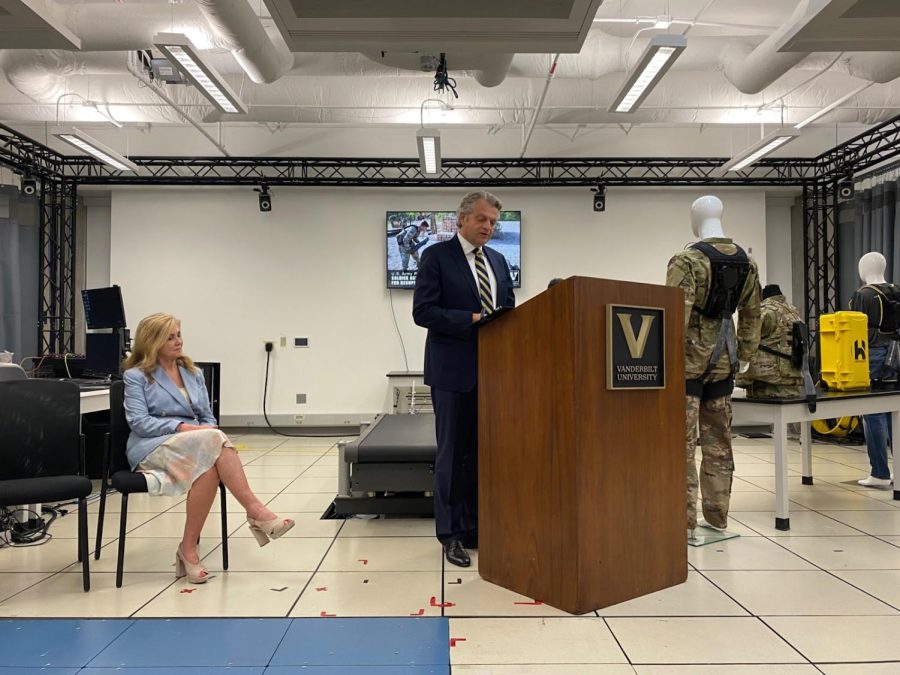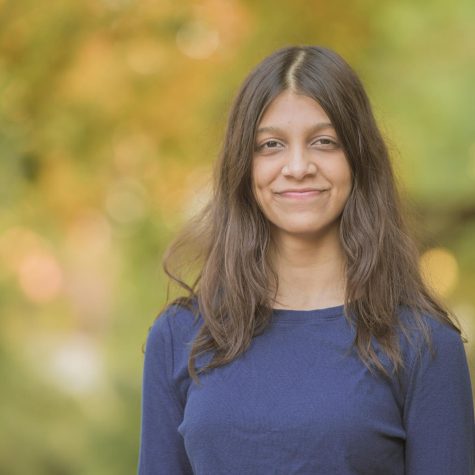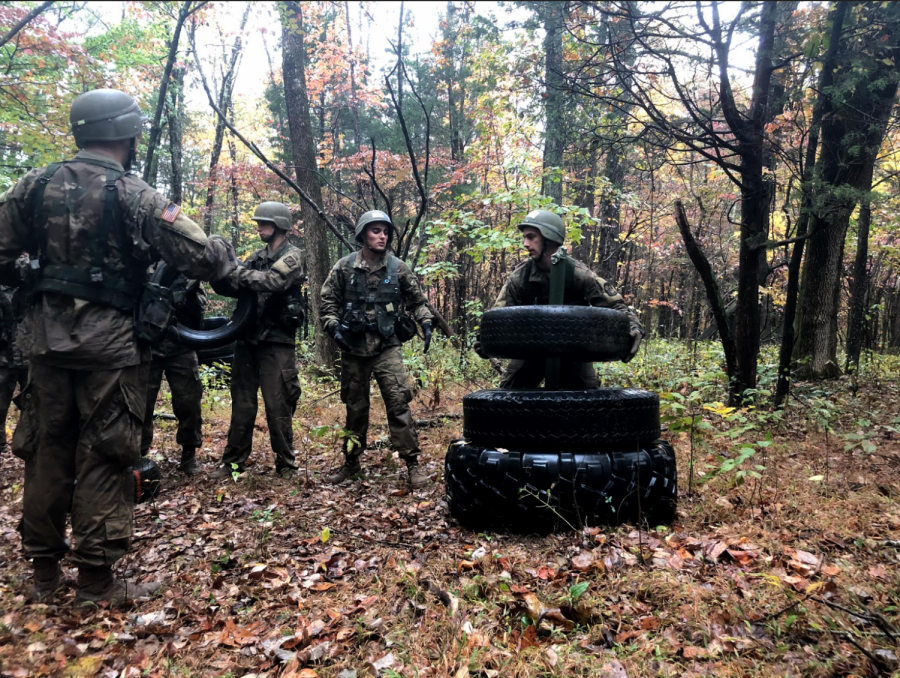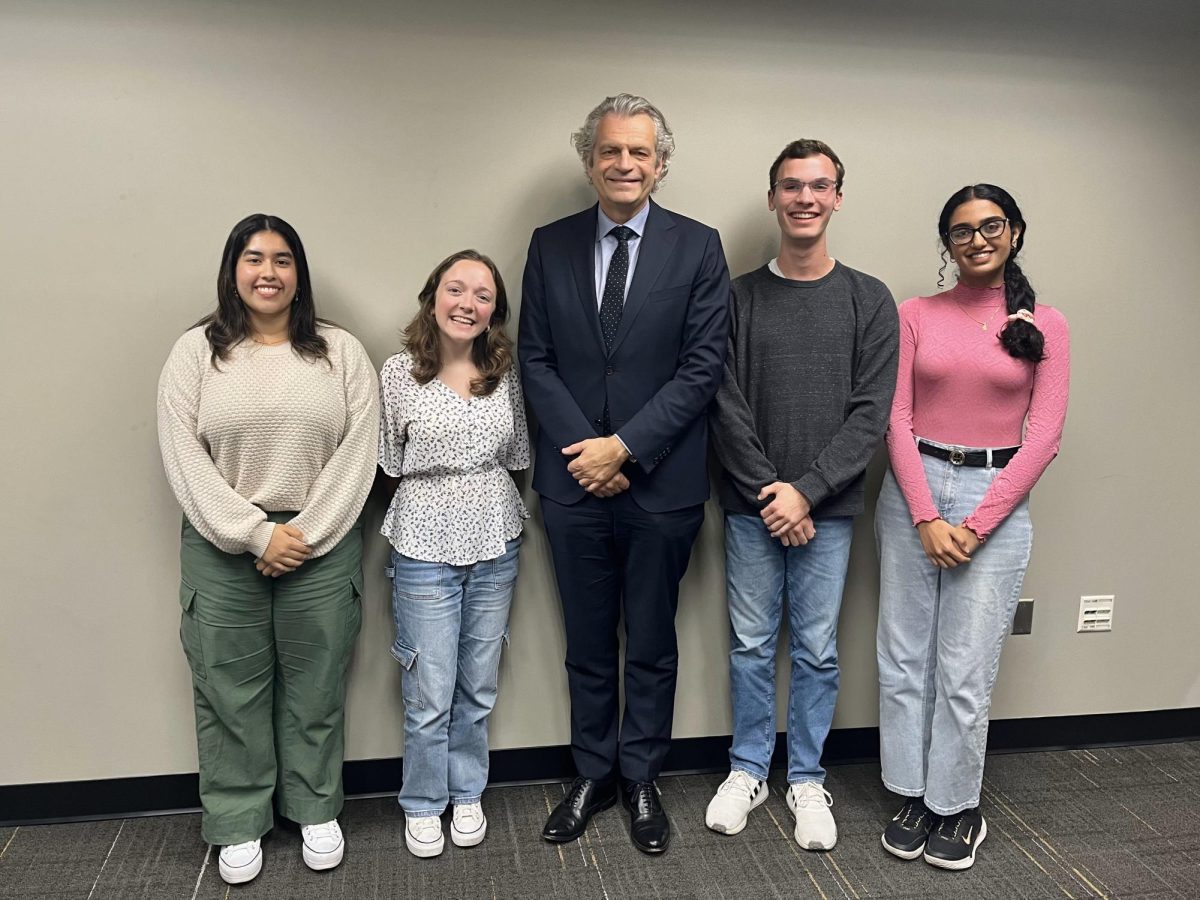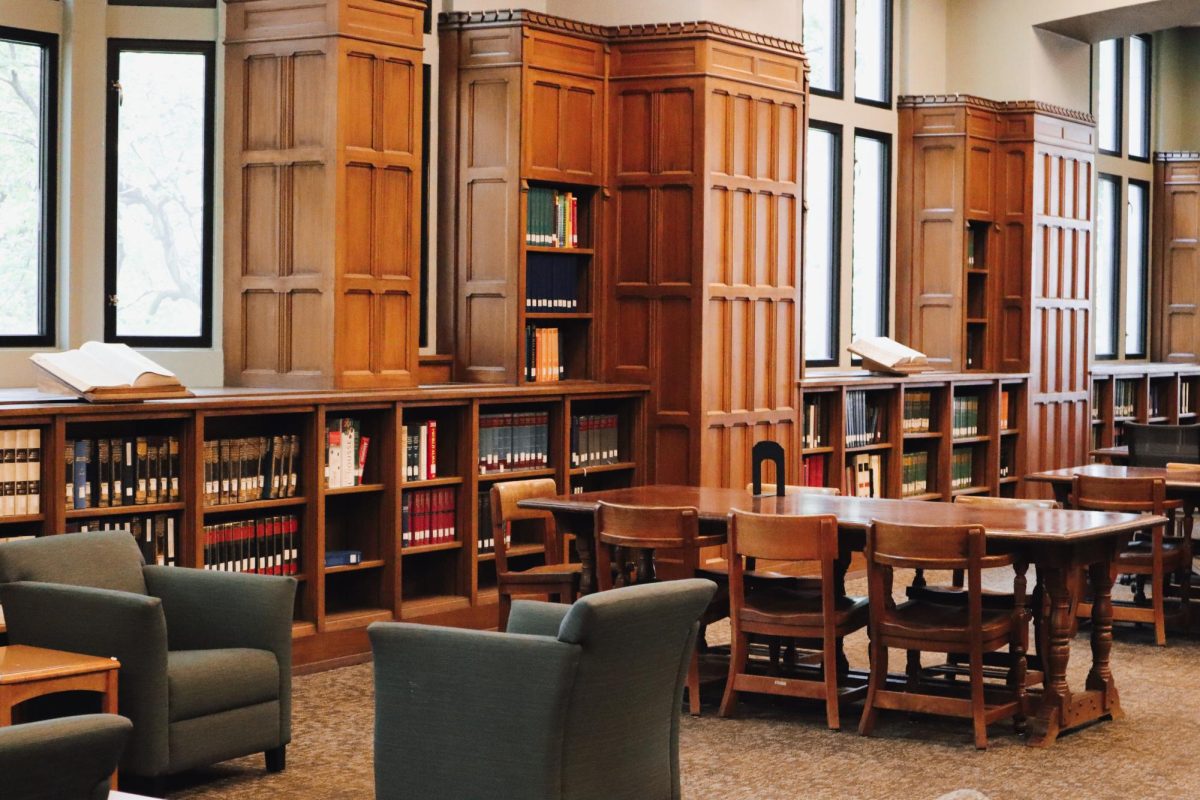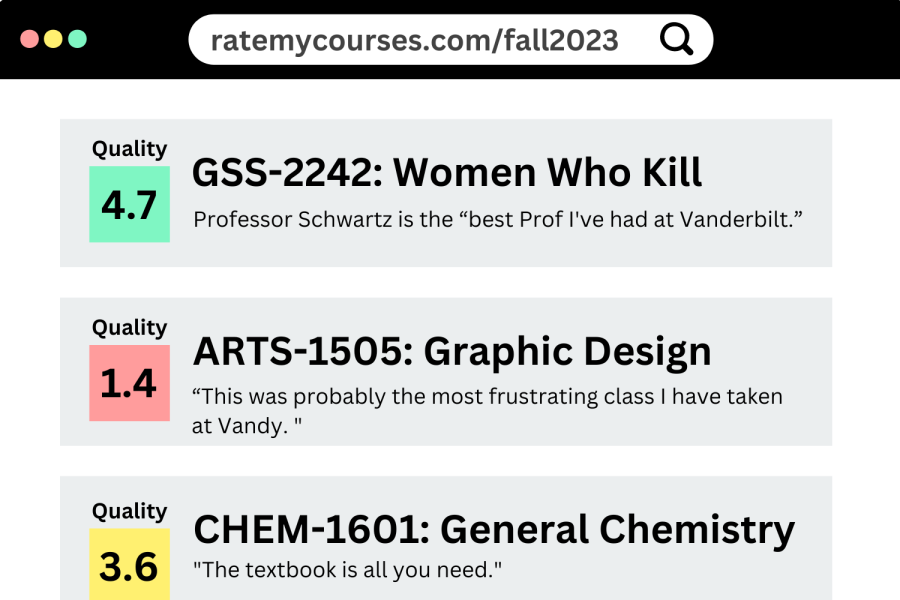On Aug. 15, Chancellor Daniel Diermeier and Tennessee Senator Marsha Blackburn met to discuss the collaboration between Vanderbilt and the U.S. Army. They spoke to the media and reporters about the progress of collaborations between Vanderbilt researchers and the soldiers of the 101st Airborne Division at Fort Campbell.
Army Futures Command and Vanderbilt University have been part of a five-year education partnership agreement since April 2019. The Pathfinder Award is a $1.2 million award given by Army Futures Command to Vanderbilt in 2021 to fund the development of an assistive bionic exosuit to help soldiers with heavy lifting. In his speech, Diermeier stated that he appreciated the partners in the process like the University of Tennessee and Oakridge National Laboratory and the support of Sen. Blackburn. He then elaborated on the progress of the exosuit, and how this collaboration is an effort to rapidly commercialize soldier-inspired research innovations.
“This increased collaboration will help accelerate innovation timeline, bring basic science and technology capabilities to bear soldier needs and deliver quality solutions with cost-effective product life cycles,” Diermeier said.
According to Blackburn, The Pathfinder Program is a way to bring active duty military into the lab to solve the problems that the soldiers are facing, as they are carrying out their mission to defend and protect.
Using the Pathfinder Award, Associate Professor of Mechanical Engineering Karl Zeik initiated a project called The Soldier Assistive Bionic Exosuit for Resupply (SABER). SABER is currently in the developmental/implementation phase. Per Vice Dean of Engineering Douglas Adams, the army is investing in additional testing with soldiers to tweak the manufacturing process per the soldiers’ needs.
Blackburn said that the assistive bionic exosuit would assist soldiers in lifting heavy equipment and reduce commonly faced issues of back pain and injuries. Per Blackburn, hours lost from back injuries are a significant problem not only with active duty military but also veterans. The soldiers who tested this suit required almost no training and considered it very simple to use.
Adams added that this exosuit is different from other similar technologies developed in peer nations. He explained that most exosuits are too heavy for soldiers to wear, unlike SABER.
“The big area where the suit sets itself apart is its functionality,” Adams said, “…where you can flip a switch and turn that [the lifting feature] on or turn that off. So, when you’re doing the other 98% of what you do during the day, you don’t need that functionality.”
Another item on display was the STAR (STake Assembly Removal) Hammer, developed by Research Assistant Professor of Mechanical Engineering Kevin Galloway. It is a 2.5-pound hammer with a curved claw that adapts to and removes a variety of stakes. The goal is to reduce physical exhaustion and risk of injury, increase mobility and survivability, and reduce damage to camo nets, thus decreasing cost and time. Per Blackburn, this hammer became available for use as of last week.
Diermeier closed the event by emphasizing Vanderbilt’s goal to “deepen” the relationships between Vanderbilt and the US Army. He pointed to ongoing projects in the field of cybersecurity as areas of collaboration. Diermeier finally brought up the evolving “security situation” around the world and assured the audience that the process of bringing these innovations out into the field is being treated with urgency.

